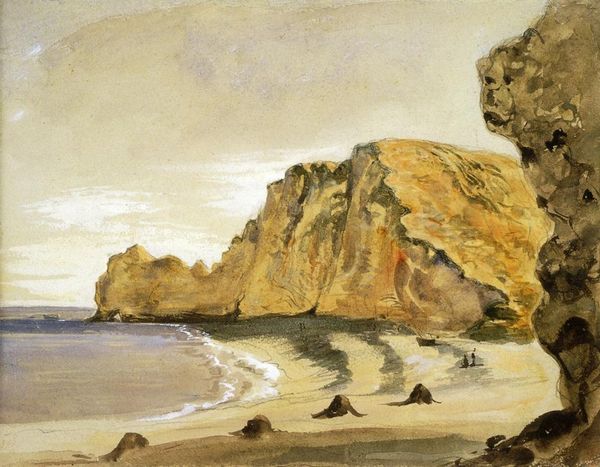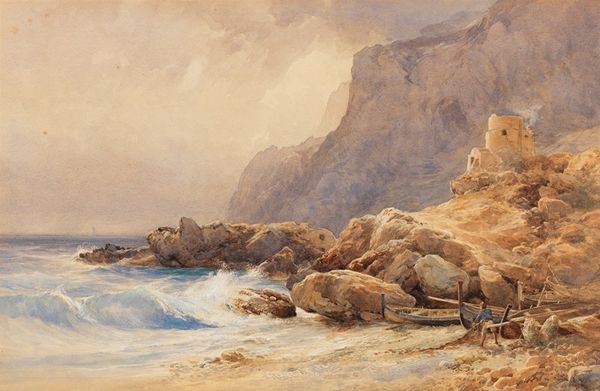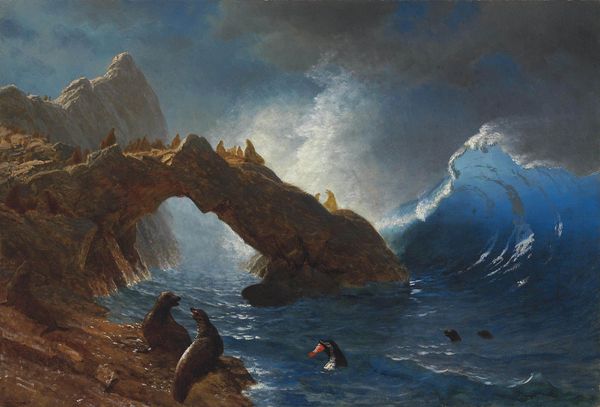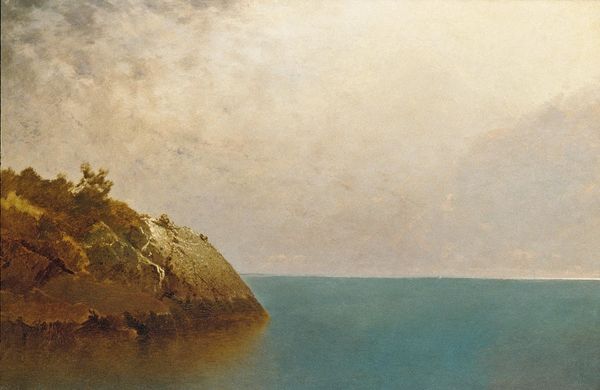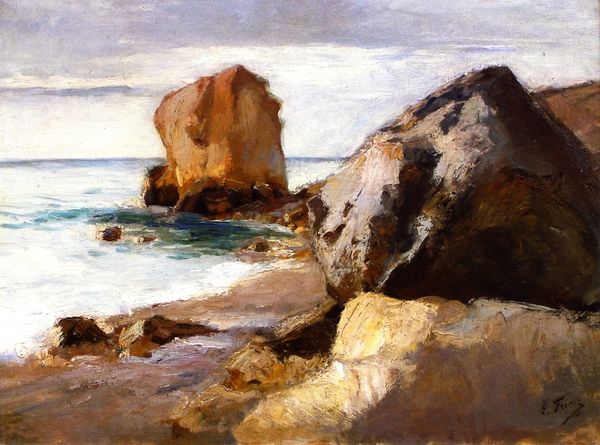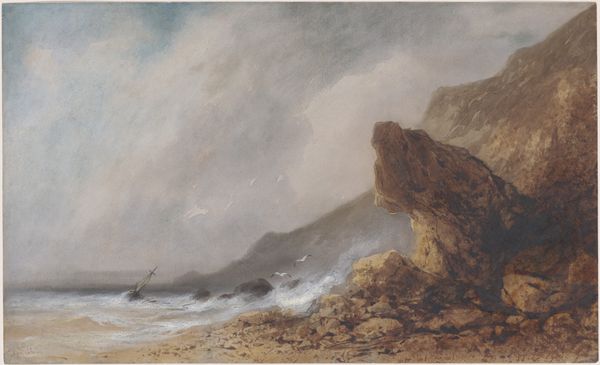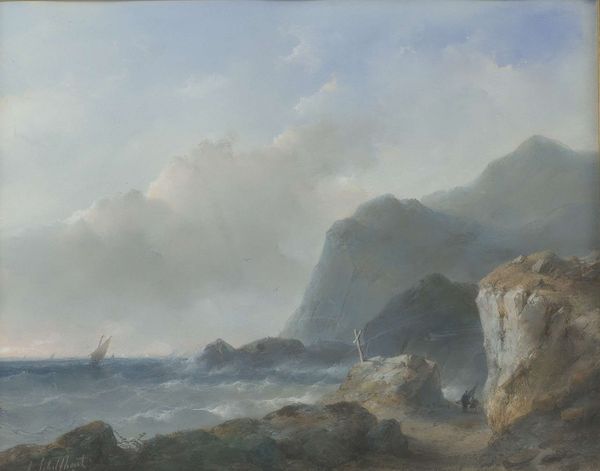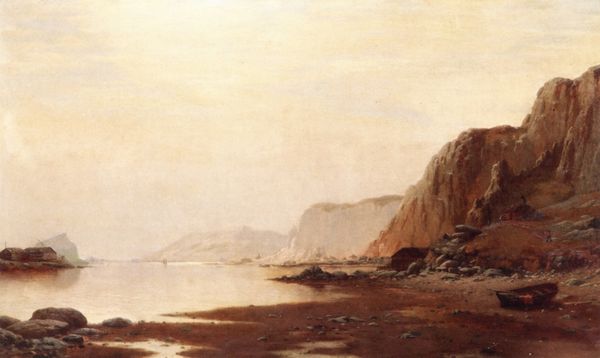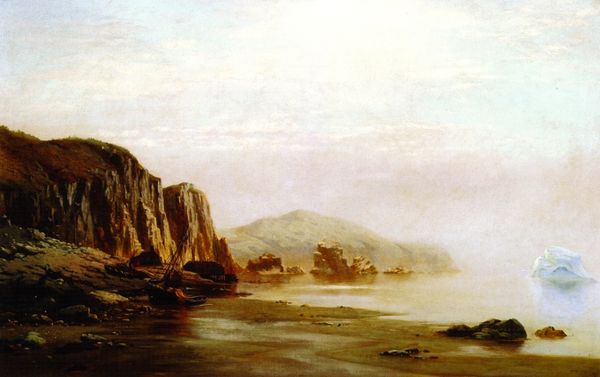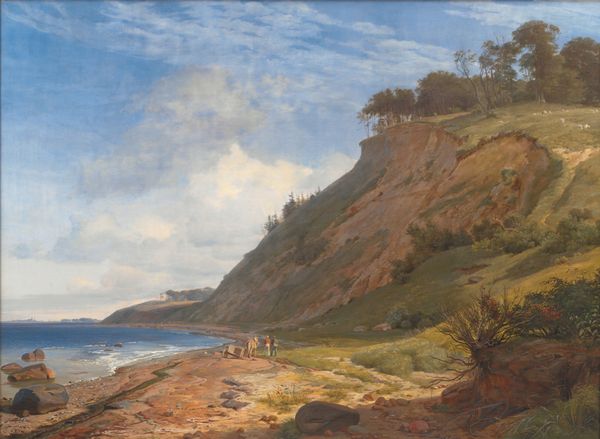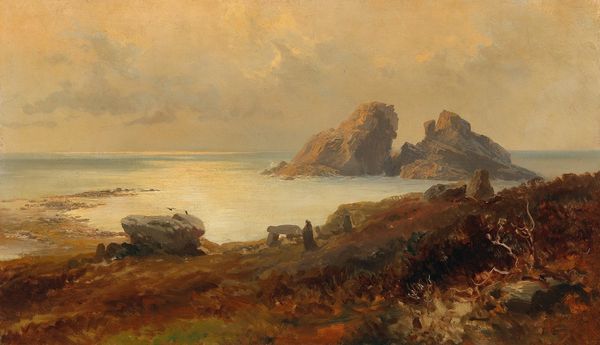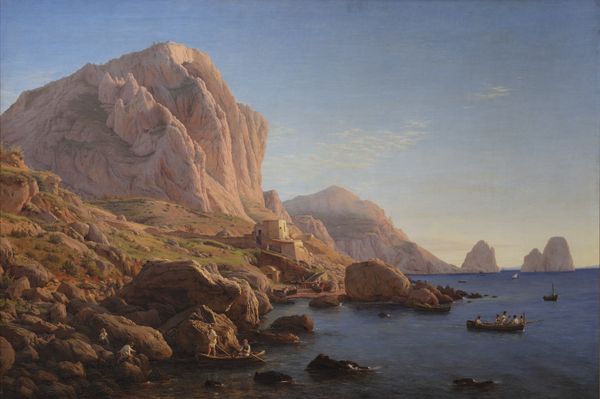
painting, plein-air, oil-paint
#
painting
#
plein-air
#
oil-paint
#
landscape
#
oil painting
#
romanticism
#
cityscape
#
genre-painting
#
realism
Copyright: Public domain
Editor: We're looking at Camille Corot’s "Rocks in Amalfi," painted around 1828 using oil paints. The massive rocks dominating the foreground give it a very weighty, almost monumental feel. What strikes you about this landscape? Curator: The composition invites us to consider the intersection of nature and culture, doesn't it? The imposing rocks, painted en plein air, dwarf the figures and the built environment – a road, buildings tucked into the cliffs. Think about the period – early 19th century – and the burgeoning Romantic movement. How might Corot be positioning humanity within this landscape? Editor: It feels like humanity is almost clinging to the rock, existing in the shadow of something far greater and more enduring. Curator: Precisely. And that tension is key. We see genre-painting elements with the figures, yet the overwhelming presence of the landscape pushes back. What sociopolitical themes could be in play? Consider how the rise of landscape painting often coincided with periods of intense social change and industrialization. What could nature represent? Editor: Maybe nature represents an escape from urban life? Or perhaps a longing for something more authentic than industrial society? Curator: Absolutely! And Corot's focus on the textures of the rocks, the atmospheric light – it invites contemplation. Do you think this depiction idealizes or critiques the relationship between humans and their environment? Editor: I think it acknowledges both the human impact on the landscape, shown by the buildings, and the enduring power of nature. Curator: I agree. Reflecting on "Rocks in Amalfi", it becomes a meditation on our place within the world. We’ve moved from an initial sense of the painting's monumentality towards understanding the complexities it reflects on landscape, Romanticism, and social progress. Editor: It’s amazing how a simple landscape painting can hold so much depth when you start to unpack its historical and social context.
Comments
No comments
Be the first to comment and join the conversation on the ultimate creative platform.
